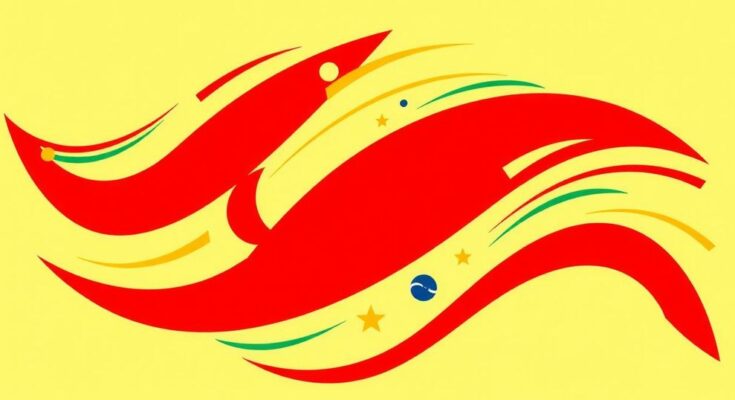McHenryson Agbesi proposes changing Ghana’s national flag to feature a white star instead of a black one, emphasizing hope, unity, and progress. The design will include traditional meanings associated with the existing colors, alongside a renewed thematic focus for the nation’s identity. Renaming related symbols aims to establish a cohesive representation of Ghana’s aspirations on an international level.
The Ghana National Flag, designed by Mrs. Theodosia Salome Okoh, replaced the flag of the United Kingdom upon Ghana’s independence in 1957. There is a perspective that its design reflects Ghana’s socio-political landscape rather than a profound spiritual representation of aspiration and hope. The flag’s colors were chosen based on the country’s context at that time, emphasizing earthly aspects over metaphysical ones.
In May 1959, a third star was added to the flag, which underwent changes following the 1964 constitutional referendum. This shifted the flag’s colors to align with the ruling Convention People’s Party, closely resembling the Hungarian flag before reverting to Mrs. Okoh’s original red, gold, and green configuration, featuring a black star at its center. Flags serve as crucial national symbols, representing a country’s identity, history, and aspirations, with changes often marking significant political shifts.
McHenryson Agbesi has proposed a redesign of Ghana’s flag to feature red, gold, and green, alongside a white star symbolizing a bright future and hope for Ghanaians. The colors maintain their traditional meanings: red for those who sacrificed for independence, gold for mineral wealth, and green for rich forests, with the black star signifying emancipation and unity.
The proposed change to a white star is intended to reflect a renewed mindset and positive vision for the nation following the 2024 elections. A black star, Agbesi argues, fails to shine brightly; thus, transitioning to a white star would resonate strength and brilliance. He cites biblical examples of name changes, asserting that a transformation in the emblem’s color and name is indicative of the nation’s progress.
Agbesi recommends renaming the black star and its corresponding entities to “Bright Star” and other related terms. This includes changing key locations and teams, which would symbolize Ghana’s ambitious potential in national and international competitions. He envisions a flag that prominently features either ten or sixteen white stars representing the nation’s regions, emphasizing unity and aspiration among Ghanaians.
In conclusion, the proposal to alter the Ghana National Flag to feature a white star symbolizes a transformative vision for Ghana. This change, including new nomenclature for key national symbols, aims to foster a sense of hope, unity, and aspiration that aligns more closely with a progressive national identity. The significance of names and symbols is underscored, expressing the country’s readiness to shine brightly on the global stage as a representation of Africa’s potential.
The proposed redesign of Ghana’s national flag seeks to instill a renewed spirit and optimism among Ghanaians. By changing the black star to a bright white star, the initiative emphasizes themes of hope, unity, and a promising future. Additionally, renaming key symbols reinforces a collective identity that aspires for brilliance both locally and internationally. This proposal reflects the importance of national emblems in embodying the evolving identity and aspirations of a nation.
Original Source: www.ghanaweb.com




